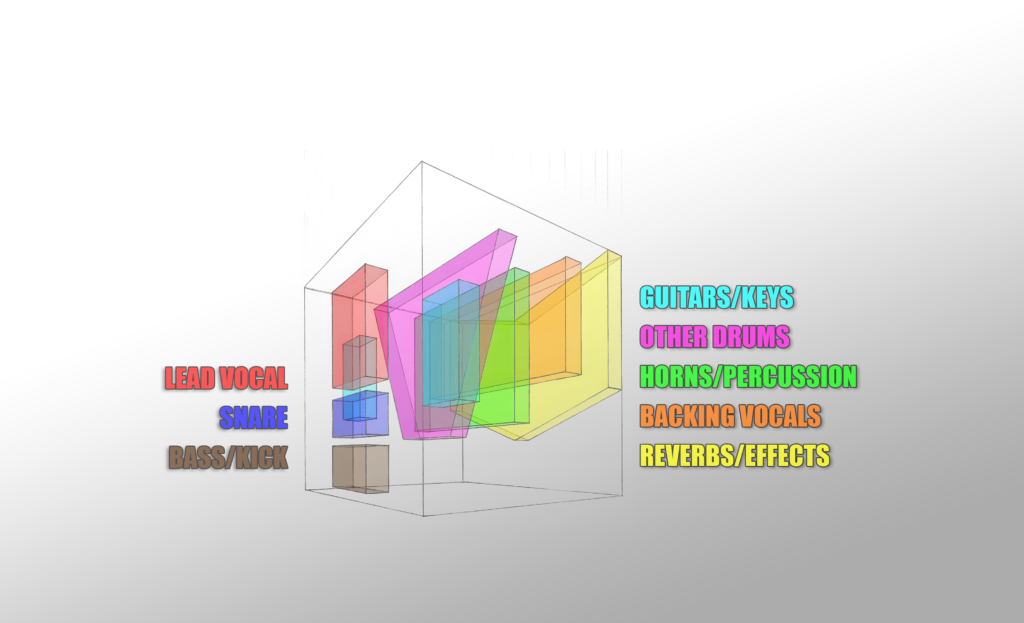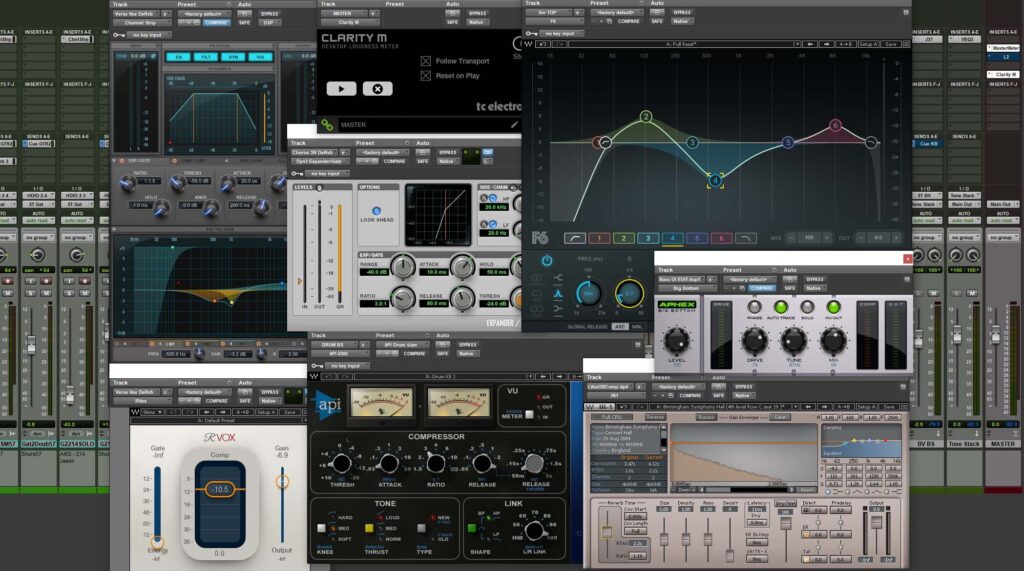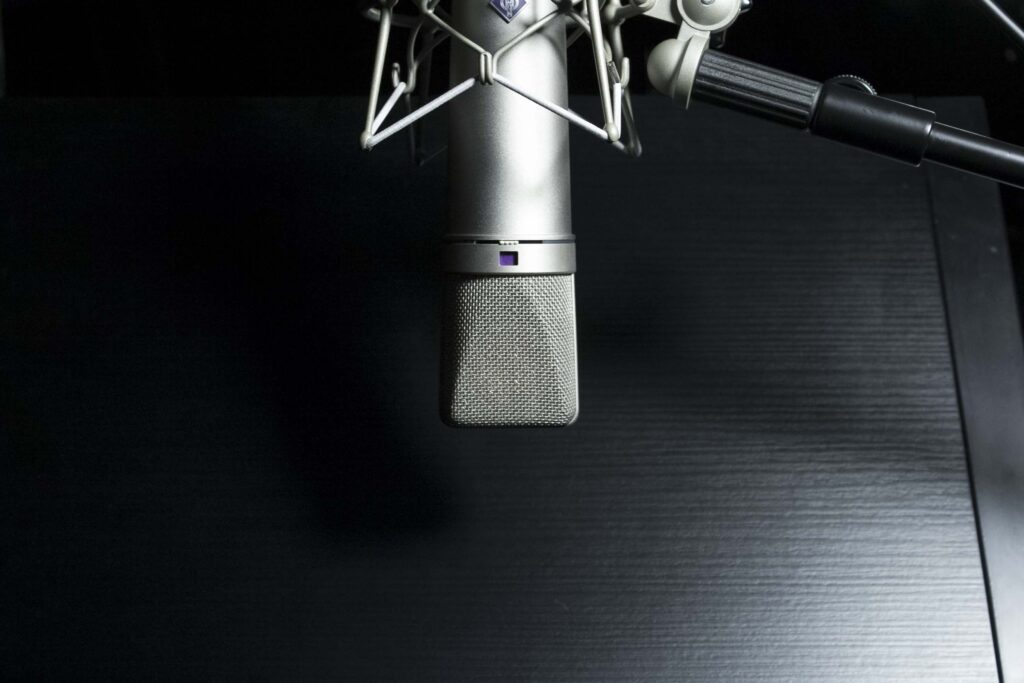Maybe it’s your first time ever in a studio, or maybe you haven’t done a session since you were in that terrible school band in 1994. Either way, the return to a studio space can be both exhilarating and daunting. You want to make sure you’re coming in fully prepared, so that you, the band, and the engineer are able to make the most of everybody’s precious time.
Show us what you got
Just like a live band sends their tech rider before turning up to a festival, it’s vital that a studio band sends their technical requirements to us well in advance. This is because the Matrix Digital studio staff will be setting up for the record ahead of time; placing instruments, amps and monitor units appropriately in the space, and wiring everything up in a neat, efficient way. The studio team will also test everything that’s going to be in use, ensuring that all the mics and cables are functioning, the headphones are at roughly the correct level, and that all the lines are routed and labelled correctly in the recording software.
Taking these steps allows the musicians to turn up for the session, plug in, and get straight into the magic. There is always going to be a need for improvisation, and any technician will be able to accommodate an extra keyboard player or a bonus tambourine overdub, but giving the studio team all of the information they require, as accurately as possible in advance minimizes mess, hassle, and the chance of a technical fault.
Are we there yet?
We all love to think that every part is going to be right on the first take, but the reality is that even the best musicians can (and should) take multiple attempts to get a part right. Recording music can be really difficult and intricate, but also needs to be as close to perfect as the musician is capable of. Additionally, a huge element of the studio environment is the band listening back to the part and making successive creative decisions, often leading to the part becoming more complex. This is a good thing for the song, but it adds even more pressure on the musician. Ideally, the parts will be thoroughly fleshed out in advance of the studio session, and these changes will be subtle.
Following this process, we might expect each musician to do a couple of takes, come back into the control room, listen through, comment on some adjustments to their playing, go back in and spend another three or four (or 20) takes until they’re happy. This can easily use up an hour (or 3) even for an efficient and focused band, so it’s easy to see how most of a day can be eaten up before you’ve even thought about the vocals, which can easily require half a day on their own.
Preparation is the key here too; if you’ve practiced the song to death, and recorded a demo of it so everyone can make notes objectively, the song should be in a pretty good shape, keeping those in-studio adjustments to a minimum, and maximizing your time and creative output.
You can fix that, right?
Digital audio workstations contain a gigantic array of tools and techniques that allow an engineer to edit and refine the recorded sound to a point of ‘perfection’. While you’re recording in the studio, you should pretend like none of these exist. As valuable as these tools are, they cannot fix out of tune guitar chords, or add emotion to a singer’s voice. So far as the recording artist is concerned, every moment of a song should be delivered as if it’s going straight to vinyl.
That said, it’s also good to understand what tools an engineer is able to utilize when you move on to the editing and mixing phase:
- Comp’ing: Means compiling the best bits from a bunch of takes onto one track. Vocalists usually like to work like this; running through the whole song six or seven times, then coming in to the control room to select the best take for each section. The limitation here is that there may be a significant tone difference between Take 1 and Take 14, so it won’t sound natural to cut between them. This technique can also work well for guitar (or bass) solos.
- Tuning: Artificially tuning a vocal (or any instrument) should only be a last resort (unless you’re T-Pain). Even if it’s subtle it will alter the tone and emotion of the vocal. Backing vocals can get away with it more easily, but you should still try to be spot-on during recording.
- Editing/Quantizing: A word that strikes fear into the hearts of drummers, quantizing is something only digital audio can produce; taking a natural part, chopping it up, and pushing it into the confines of set grid lines. There are different levels of editing; pop music generally forces every hit and note hard onto a grid, folk music may do absolutely zero editing, and rock music could be somewhere in between. Really this decision should consider the song as a whole, and clear dialogue should occur between the engineer and musicians about how much editing needs to take place after the record.
So, when you’re coming into the studio, remember: help us to be prepared, polish your song before you get here to maximize efficiency, and focus on getting everything as close to perfect as you can during the record so editing and mixing can push your song from 90% up to 110%.



